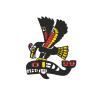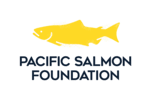
News Release
FOR IMMEDIATE RELEASE
February 24, 2024
Cowichan Weir replacement project receives $14 million from Province of BC
DUNCAN, BC – The Cowichan Tribes First Nation, Cowichan Valley Regional District (CVRD) and the Cowichan Watershed Board welcome the announcement of $14 million in funding from the Province of British Columbia for the Cowichan Lake Weir replacement project.
A new weir is direly needed to support sustainable water flow in the Cowichan River, as evidenced by the massive fish die-off in July 2023 and the need for electric pumps to keep minimum river flows. The provincial funding contribution will match an existing federal funding agreement with Cowichan Tribes, enabling the partners to move forward with this important project.
“I am pleased to see the provincial government commit funding for the raising of the Lake Cowichan Weir, a positive step for this essential project to sustain the health of the Quw’utsun Sta’lo,” said Xtli’li ye’ Lydia Hwitsum, Cowichan Tribes Chief and Co-Chair of the Cowichan Watershed Board. “We look forward to the next steps with the Province in advancing liability protection and a collaborative approach to water governance that respects Cowichan Tribes inherent rights,” added Hwitsum.
The replacement of the existing Cowichan Weir has been a priority of the partnership group, which also includes Paper Excellence (Catalyst Paper) as the existing water license holders for the weir, for almost a decade, and with research and recommendations to raise the height of the weir dating back over 25 years. In 2018, with the support of the Province of BC, the partners undertook the Cowichan Water Use Plan, which resulted in a broad consensus to replace the existing 97cm weir with a new structure that would be 70cm higher. Engineering and design work, including a shoreline assessment, was concluded in 2022.
“We are elated to hear that the provincial government is committing to the health of this heritage river and ecosystem, while also supporting water preservation for the communities who depend on this critical resource,” said Aaron Stone, Chair of the Cowichan Valley Regional District and Co-Chair of the Cowichan Watershed Board. “This announcement is the result of a long journey of collaboration between the CVRD and Cowichan Tribes. This work reflects the benefits we all share in working together along the path to reconciliation. I’m privileged to have played a small part in advancing this project that raises indigenous knowledge and teachings, and a local governance model that is keenly focused on ensuring the health of the entire watershed for the economic, ecological and cultural values it represents to all of the people, fish and connected ecosystems who cherish and depend on the Cowichan river.”
This newly announced funding will match an existing $24 million contribution from the federal Disaster Mitigation and Adaptation Fund contribution to Cowichan Tribes for a broader Cowichan River Resilience project, which includes the development of a new weir.
“A collaboration to put water for salmon first, with Cowichan Tribes in the drivers’ seat, and all governments partnering – this is a different, and better, approach to doing things,” said Tom Rutherford, Strategic Priorities Director for the Cowichan Watershed Board. “We have more work to do, but today we want to celebrate the decades of work and collaboration by so many who love and care for the long-term health of this River. From the grassroots volunteers, to Elders and knowledge holders, to researchers and project managers, to the mill weir managers, and elected leaders at all levels who have remained committed with us. This is a critical project to sustain wild Pacific salmon populations, regional economies, and constitutionally protected Indigenous rights. Today is a good day.”
– 30 –
Media Contact
Danielle Paydli, Executive Director, Cowichan Watershed Board / [email protected] / 250-616-0827
Background
The 2018 Water Use Plan, developed in partnership by the CVRD, Cowichan Tribes, the Cowichan Watershed Board and Catalyst Paper, included a recommendation to raise the weir by 70cm to increase storage capacity, as well as changes to how water storage is managed in the early season. More water would be captured in early spring and released throughout the dry summer and fall months, improving the health of aquatic habitat for fish and vegetation as well as supporting ongoing recreation and economic development. Storing more water will result in fewer extreme low water events and the reduced need to pump water out of the lake to support base flows of the Cowichan River. More: https://cowichanlakeweir.ca/water-use-plan/
Cowichan Tribes stewardship of the environment, the rivers, and the fish is ingrained in their snuw’uy’ulh (teachings): “Hiiye’yutul tst ’u to’ mukw’ stem ’i’u tun’a tumuhw” (Everything in nature is part of our family – we are all relatives).
The current weir was built in the 1950s at Cowichan Lake to store enough water so that Cowichan River flows could be sustained throughout the dry season. It is a cement structure, spanning the lake at the head of the river, and includes a boat lock and several ‘spill gates.’ It is owned and operated by Paper Excellence (Catalyst Paper) under license from the Province of BC. The weir controls seasonal water level fluctuations but does not exceed natural “high water” levels, so that the natural shorelines and riparian habitats are intact.
 Email
Email



